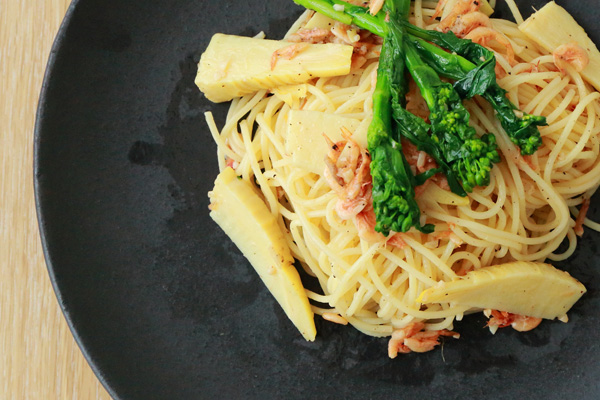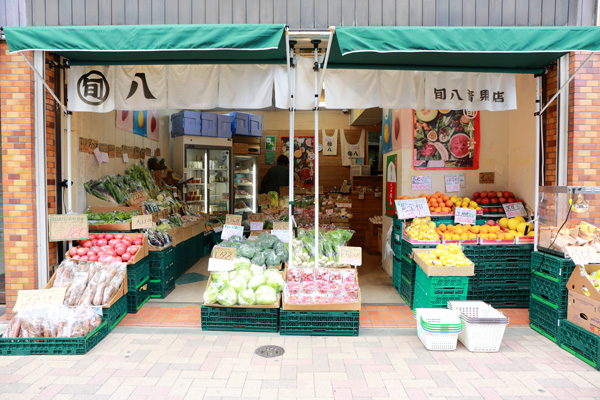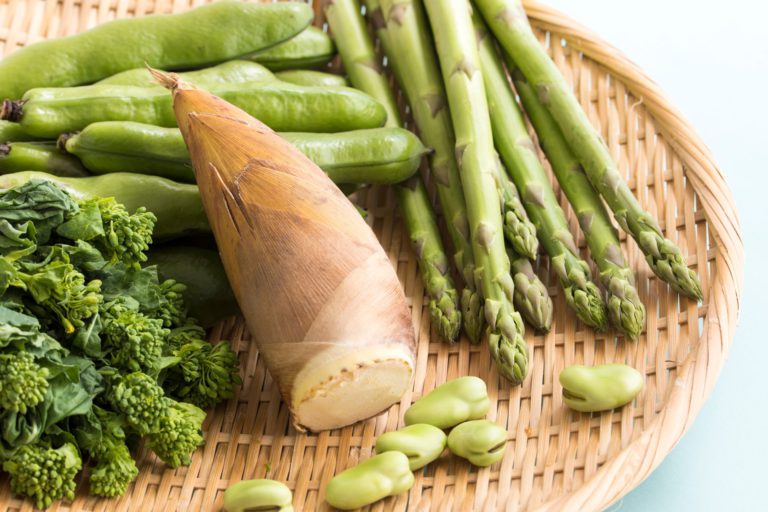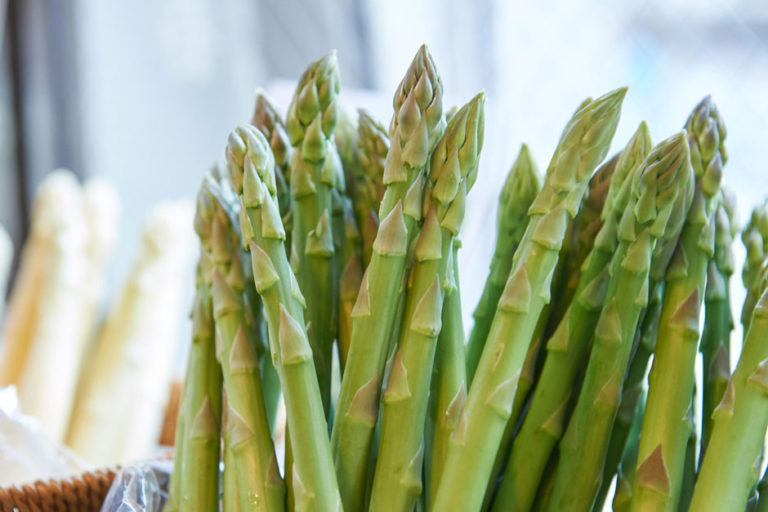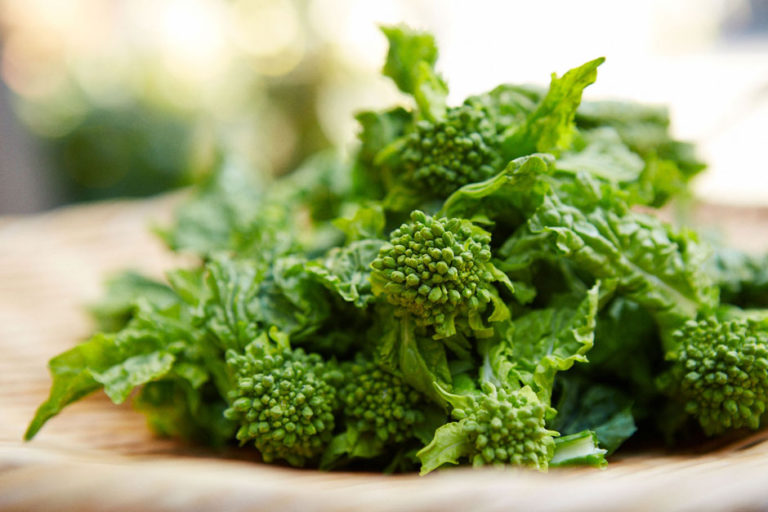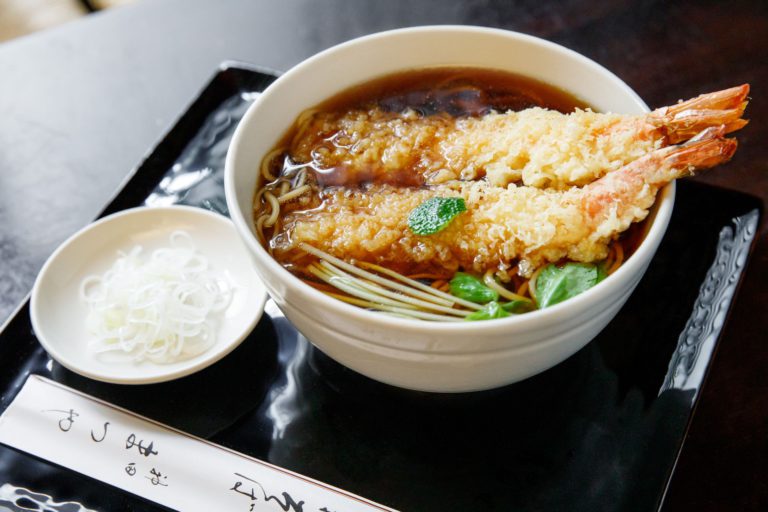“The Vegetable of Spring, The Bamboo Shoot”

The interview took place at a popular vegetable store, “Shunpachi Seikaten” having 13 stores in the Tokyo area providing its customers with fresh and tasty produce at reasonable prices. The connoisseur shared the methods of how to select and consume this springtime delicacy, the bamboo shoot.
Bamboo shoots grow vigorously day by day.
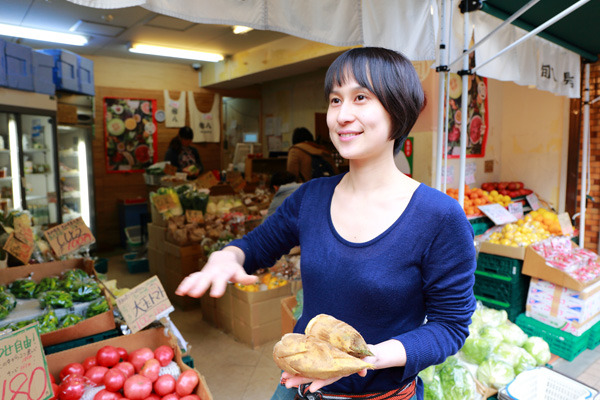
Just the around the time one senses that spring is just around the corner, vegetable stores and supermarkets start selling “Takenoko,” bamboo shoots. Takenoko is the young sprout growing from the bamboo’s underground stem. Takenoko literally means the bamboo’s child. The rate of the bamboo shoot’s growth is incredible as some bamboo shoots are known to grow up to 1 meter in a day. Due to this vigorous growth, the bamboo could be regarded as a spring vegetable representing the start of new things.
In late March when cherry blossoms were blooming, “mosochiku,” a typical kind of bamboo shoot was on display in the front of Shunpachi Seikaten Gotanda Store. There is something about the chubby mosochiku that most people find attractive. The soil adhering to its surface is moist and delivers an air of freshness that comes immediately after the harvest.
“Many of bamboo shoots that you usually find at stores are mosochiku. Its season is normally at the end of March to May. Appearance of the mosochiku in the market starts in Fukuoka Prefecture, a representative prefecture in Kyushu, and proceeds north to the Kansai and Kanto areas as if it were a production relay.”
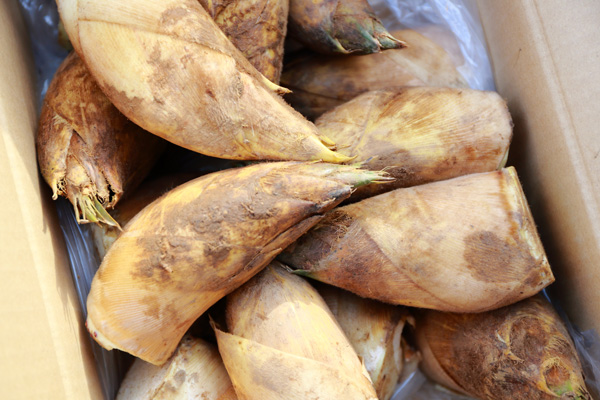
This was told by Ms. Takuno Matsune, a buyer of Shunpachi Seikaten. Ms. Matsune is from Kitakyushu City whose specialty products include the Ohma bamboo shoot. Bamboo shoots have been a regular spring food material in her home since her childhood.
“Mosochiku is soft and easy to eat because it is milder than other varieties as it is not as bitter. The taste of the bamboo shoots is greatly affected by the soil in which they grew. The bamboo shoots grown in the red soil in Fukuoka are especially noted for their mild sweetness. Kyoto, too, is famous as a producer of bamboo shoots. Their “shirako” is a high-grade bamboo shoot known for its light-colored skin.”
Following the mosochiku, the “hachiku” with its reddish-purple skin and the “nemagaritake” whose root is curved come into season in May and June.
Bamboo shoot selection
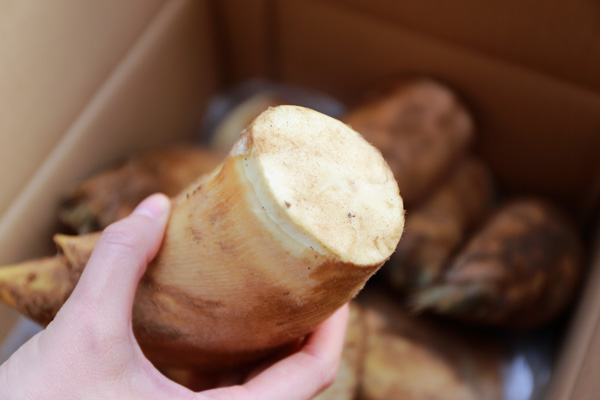
When preparing bamboo shoots, the main concerns are their strong sharp taste and bitterness. It is said that the bamboo shoots that have grown above ground develop a sharper taste and bitterness due to their exposure to the sun.
Bamboo shoots that have yet to break ground have a milder taste and can be eaten raw on the spot, which is “an extreme way of eating” bamboo shoots and difficult for the general consumer to do. Ms. Matsune shared how an expert would select a tasty bamboo shoot.
・Choose one with a yellow tip.
・Choose one with a fresh cut end.
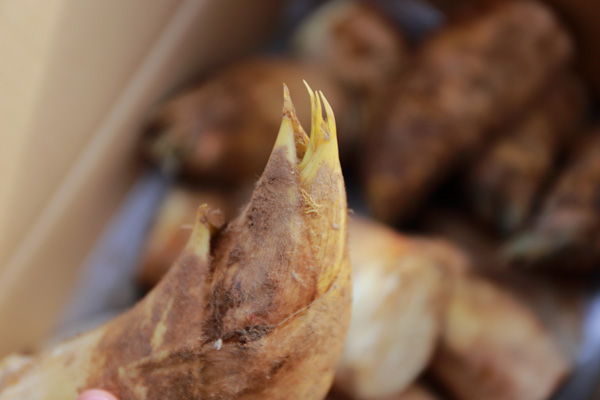
“Exposure to sunlight advances the process of photosynthesis in bamboo shoots, causing both the tips of the bamboo shoot to become green and changing the color of the skin as well. This exposure increases the sharp taste and bitterness of the bamboo. Bamboo shoots having yellow tips were harvested prior to reaching the surface. Proper removal of the bitter taste from bamboo shoots results in a tasty treat. Check the end for freshness. Please select shoots having ends that have not dried out as they are fresh.”
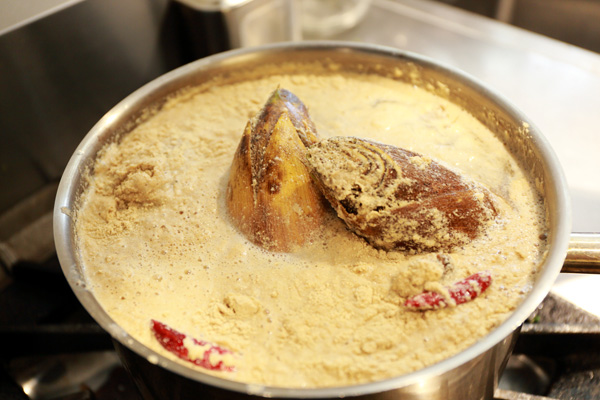
To remove the bitter taste, perform the following after purchase.
1 Cut off the bamboo shoot tip and the hard root section.
2 Cut a longitudinal slit in the bamboo shoot with a knife to ensure even cooking.
3 Completely immerse the bamboo shoots in a pot containing water including a pinch of rice bran and bring the mixture to a boil.
4 Boil the bamboo shoots for about one hour, turn off the heat and let the pot stand until the hot water in the pot cools down.
“If you do not have rice bran, a small spoon of baking soda can be used. My grandmother told me Procedure 4. Allowing the water to gradually cool down results in the proper removal of the bitterness,” said Ms. Matsune. She also recommended roasting bamboo shoots in an aluminum foil wrapper and eating them with soy sauce and citrus juice.
Bamboo shoots contain plenty of dietary fiber
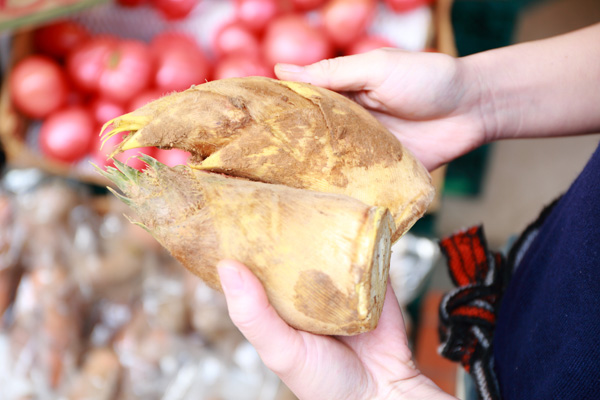
Bamboo shoots are rich in insoluble dietary fiber. Insoluble dietary fiber is essential for proper intestinal function, relieving constipation. It also acts as a detox for the body.
As a bonus, bamboo shoots contain many minerals such as potassium, copper, and zinc. By consuming this seasonal food, you can take various nutritional elements.
As Ms. Matsune says, “Cooking bamboo shoots may appear to be difficult or troublesome, but actually it does not require much time and the process is easier than you may have imagined.” So, let’s try cooking bamboo shoots this spring!
Bamboo Shoot
Source:Takuno Matsune, buyer, Shunpachi Seikaten grocery store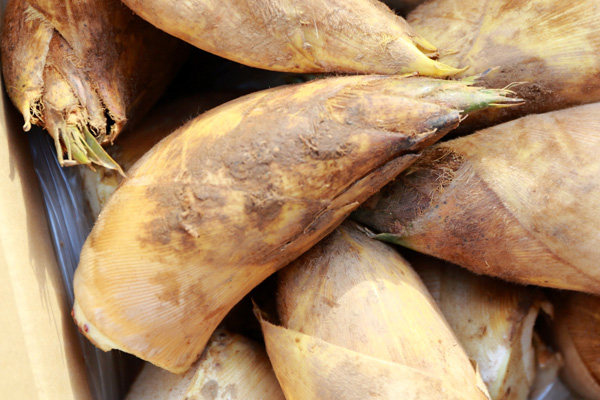
Peak Season
From the end of March to May (Mosochiku)
Tips
Choose one with a yellow tip.
Choose one with a freshly cut end.
How to enjoy them
Roast an entire bamboo shoot in a foil wrapper and eat with soy sauce and citrus juice

